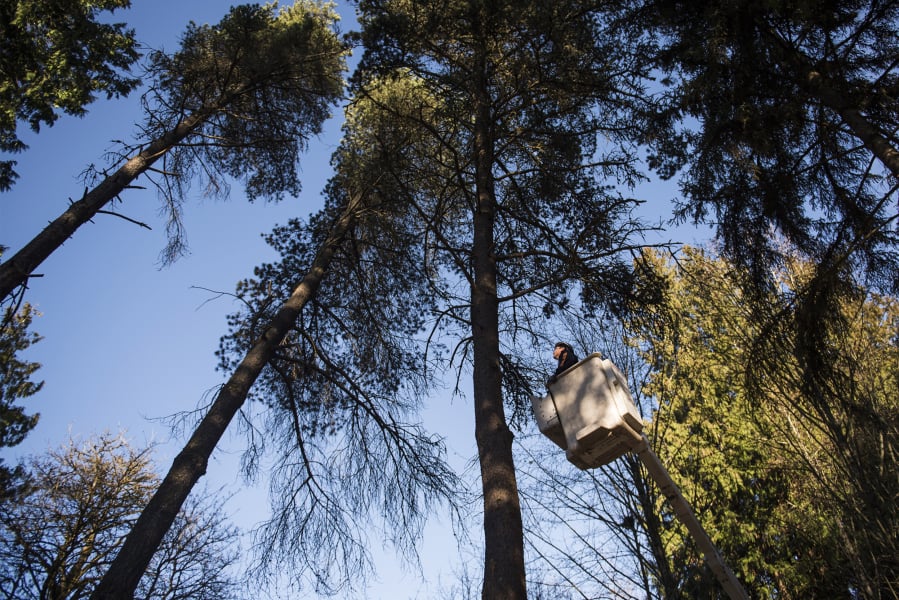Just about every day, arborist Greg Richardson and his crew are out dealing with trees suffering damage from the same problem.
“There’s one main culprit that will weaken the tree, or leave them in a stressed state, and then some damaging agent, or some environmental factor, comes along and basically finishes them off,” said Richardson, owner of Cascade Tree Works LLC in Orchards, on a job site late January.
It’s a lack of water.
A Columbian reader — through our Clark Asks website feature, where readers can suggest and vote on questions for further coverage — anonymously noted their neighborhood’s conifers appeared to be in distress. Other readers choose that entry as the top one for more investigation.
That reader, and the voters, aren’t mistaken. The Northwest has seen repeating, on-and-off drought conditions for the past several years, and that kind of stress can lead to serious problems for already sensitive trees.




